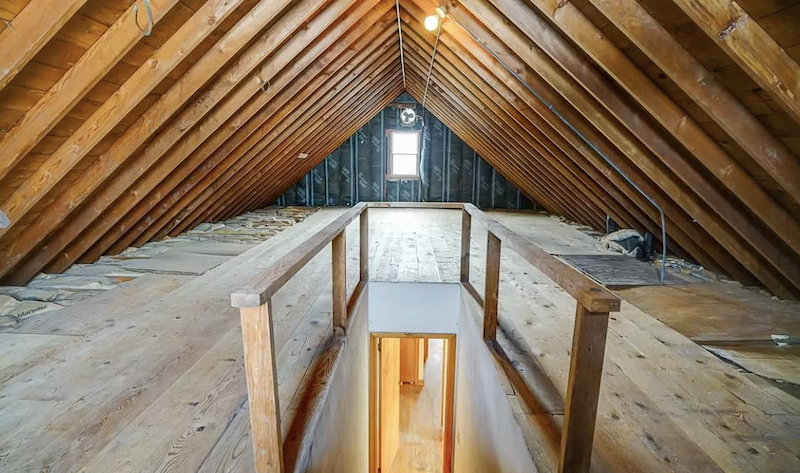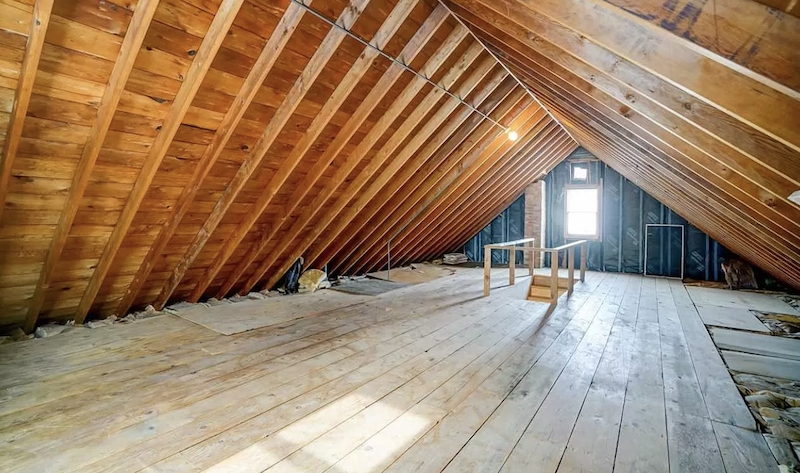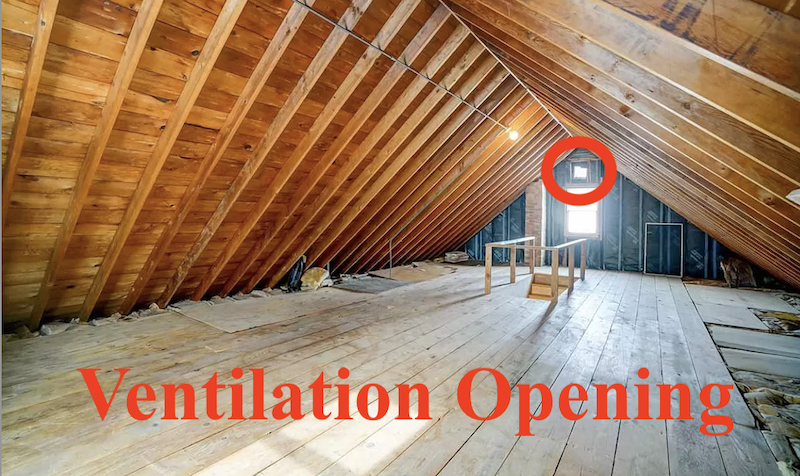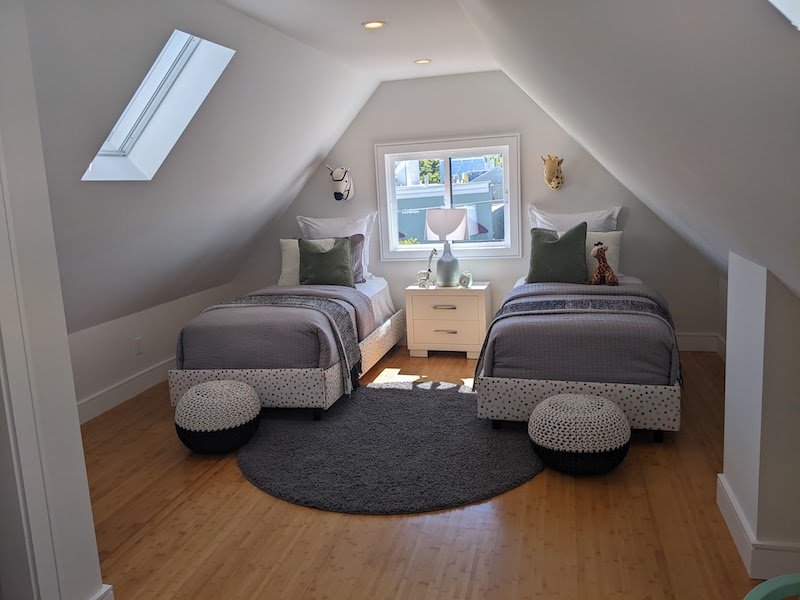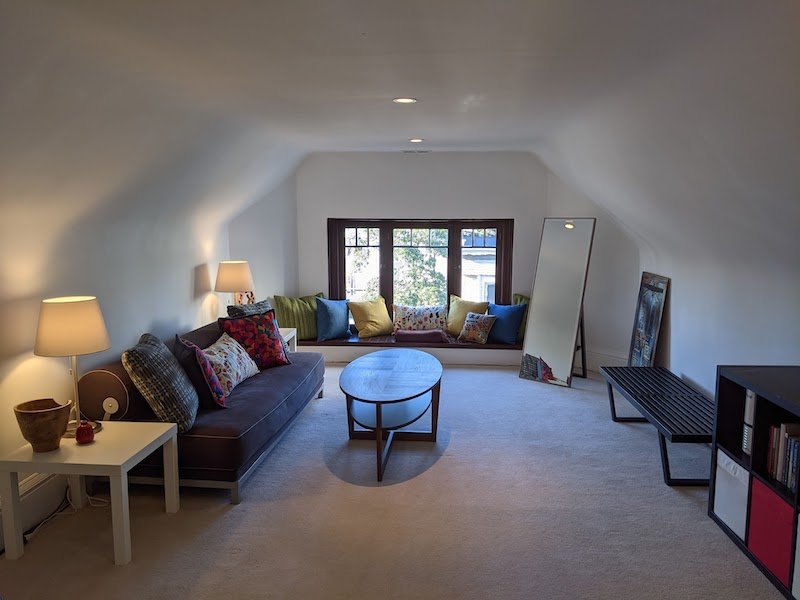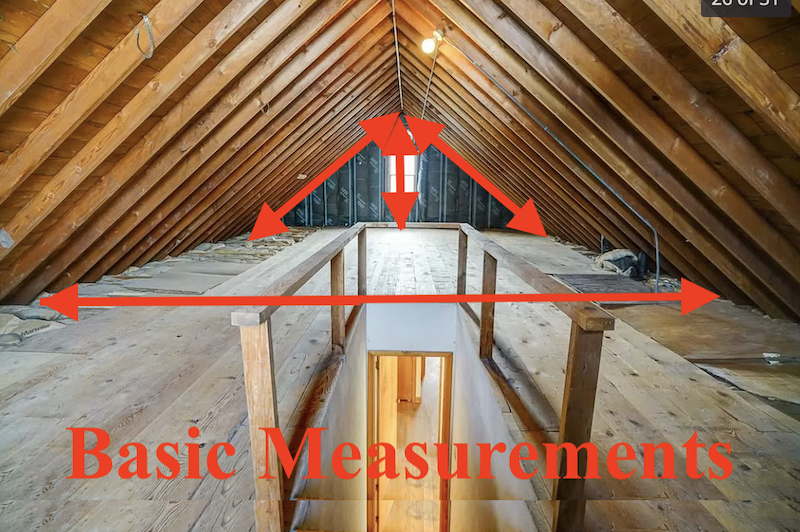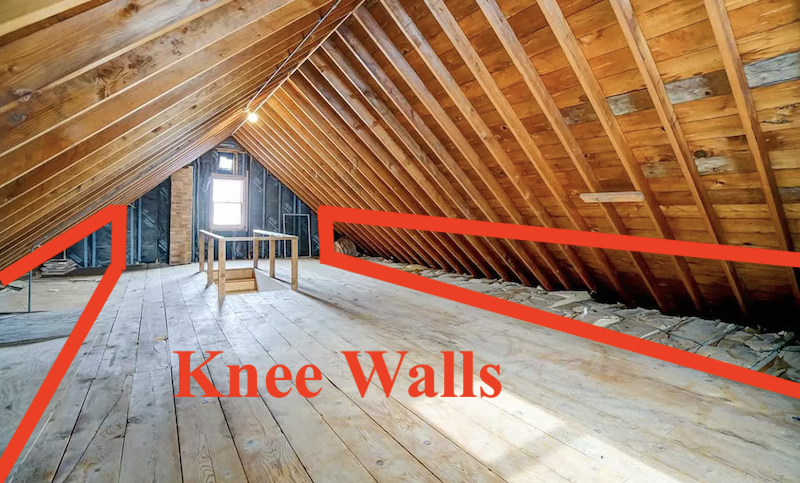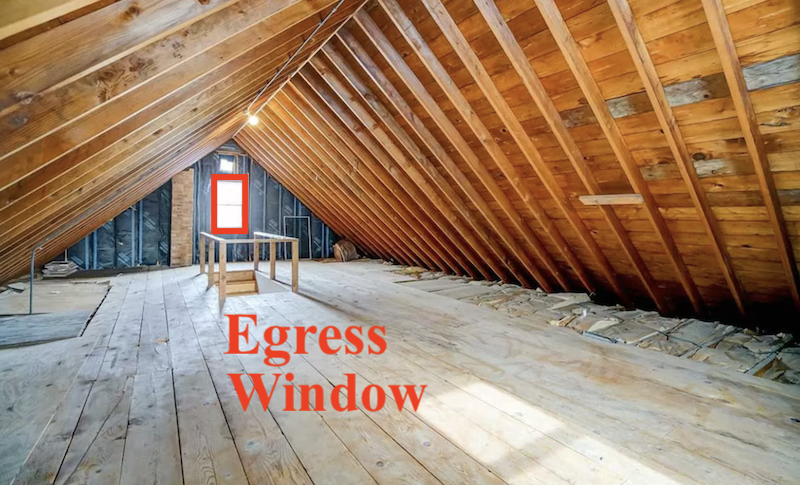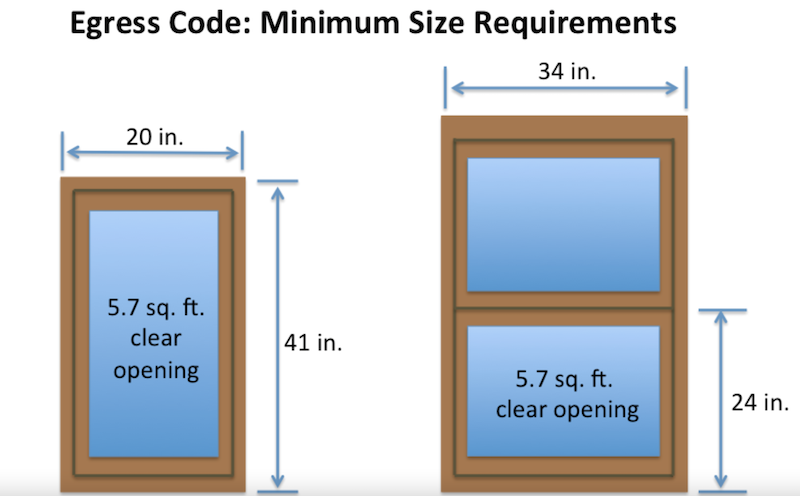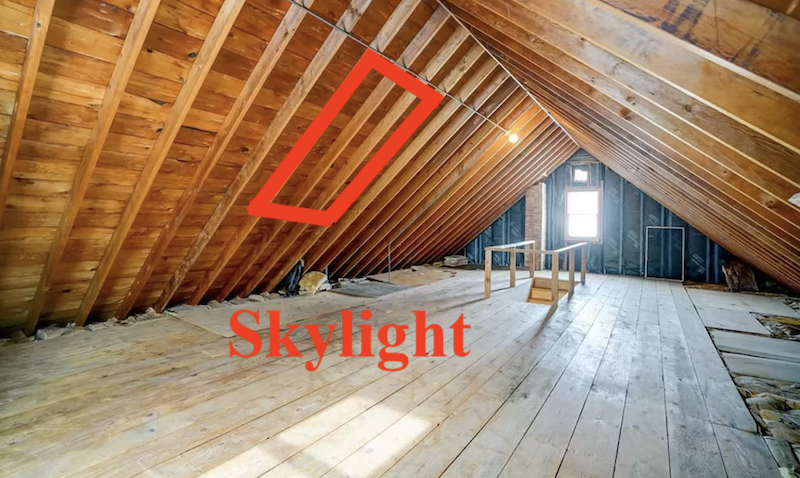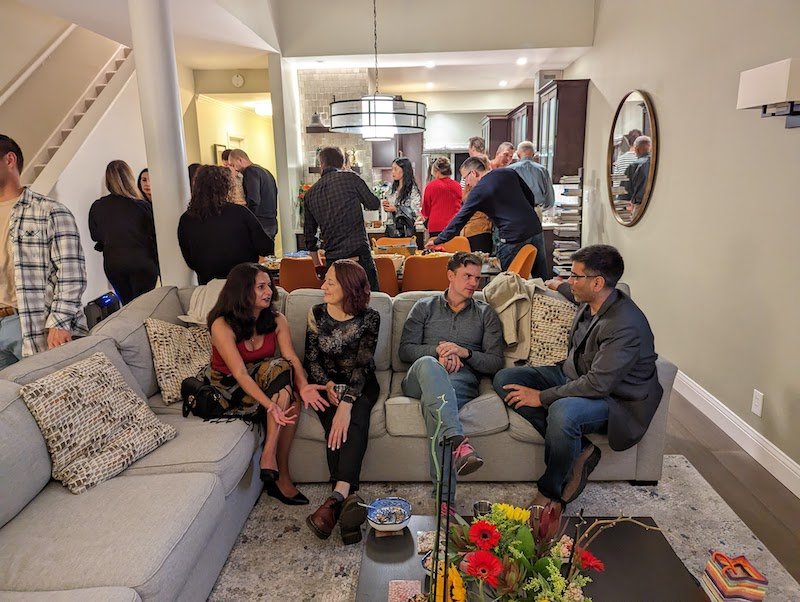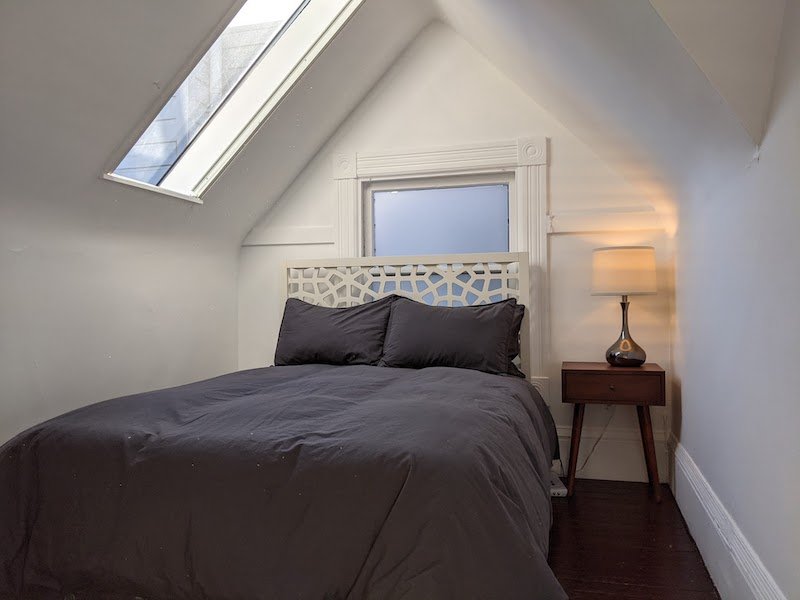Reverse Engineering
I’m currently having a conversation with a trusted building contractor about how we might proceed with a relatively simple project. He asked me to be specific about my goals. I’ll use this blog as a way of working through the particulars. I know exactly what I want, but I’ve learned from past experience that sharing my hopes and dreams with a construction professional is the fastest route to having my spirit crushed into dust. Before the napkin sketches even start most of the decisions about what can and can’t be accomplished are already made by institutional parameters, the prevailing culture, and money. So we’re going to reverse engineer this project instead.
Here’s the raw space to be improved. This is the attic of a modest home that was built in 1950 in Madison, Wisconsin. As was common in post war starter homes, this house was constructed with the expectation that over time the home would be modified and expanded. Unfinished attics and basements were low hanging fruit for creating additional bedrooms, baths, and family rooms to accommodate growing families. I spent a chunk of my childhood in a house of this vintage where the attic had been turned into two extra bedrooms and an extra bath.
In keeping with post war construction, this house was built with minimal thought toward energy conservation. It was discovered during renovations on the main floor that the wall cavities throughout this house have zero insulation. Heating oil was cheap enough in the 1950s that people didn’t see the value in insulation. Omitting that expense helped kept the cost of new starter homes low.
The original single glazed windows are so leaky they could double as kitchen colanders. There’s some thin old fiberglass batts in the attic floor that were probably added during the oil shocks of the 1970s, but it’s pretty skimpy and there’s no vapor barrier at all. That was probably the same era when the furnace was converted to natural gas.
Notice the open vents at the roof peaks at each end of the attic, one of which has a motorized exhaust fan. The space was intentionally left to breath in order to expel moisture and heat from the structure and extend the life of the roof. Also notice the stairwell leading to the habitable space downstairs. There’s nothing but a flimsy interior door separating the main conditioned space from the extreme heat, cold, and wind of Wisconsin’s great outdoors by way of the attic.
Here are a couple of examples of roughly what I’d like to do with the space. I’m not asking for a lot. Let’s seal up the holes in the walls, properly insulate the space, replace the old windows, add whatever electrical, heat, and air conditioning is required, put up drywall, and a decent floor. No Architectural Digest. No Dwell Magazine. Plain vanilla. But solid.
I also insist this work doesn’t involve begging for special permission from regulatory authorities. I’m happy to pull basic permits, use licensed professional trades, and have simple inspections. But anything that isn’t allowed as-of-right or requires a review board is out of the question. And at the end of the day any retrofit has to make financial sense.
At the moment just about everything about this house is considered “legal, non conforming.” That means it’s fine if it stays the way it is, but if it’s substantially modified it probably needs to be brought up to current code. Sometimes that’s simple. Often, it’s an ugly can of worms. In order to upgrade one thing you then have to upgrade the things associated with it. That triggers other upgrades which may domino to still others. Nooooo. I’d rather chew on broken glass.
One way to avoid some of that madness is to work exclusively within the existing building envelope. This assumes the structure can accommodate key minimum standards. If the ceiling is a couple of inches too low the whole project could become unviable. If the placement of knee walls is off relative to the required floor area it could put the kibosh on things. Step number one is determining if there’s sufficient wiggle room even after insulation, drywall, and flooring are accounted for.
The next concern is health and safety. Every legally habitable space must have two means of emergency egress. If there’s a fire people need to escape and first responders need to enter. Code requires specific dimensions for these points of escape.
The existing attic windows are quite small. I doubt they’ll qualify. Since they’re double hung only half the window can be opened (either the top or the bottom) at one time. They need to be replaced anyway in order to keep the space better insulated so I’m amenable to getting new units. I’m hoping a casement window of exactly the same size will do. A casement window opens from hinges on one side like a door so the entire window can open fully. We’ll see.
Could the gable walls be opened up to accommodate much larger windows? Yes. Would that make the space brighter and more pleasant? Absolutely. Might that set off a series of shenanigans at the building department? I’m never going to find out. Replacing windows within exactly the same rough opening is almost always a super straightforward deal with the authorities. Reframing a new opening with a new header and blah, blah, blah… Nooooooooo.
The next code box that might need to be ticked will probably involve the distance between windows. In order to achieve a minimum acceptable amount of natural daylight and ventilation each volume of space needs a specific percentage of fenestration. At the moment the only two windows in the attic are 34 feet (10 meters) apart. Could dormers be installed to create more vertical wall space for additional windows? Of course. Am I willing to poke that bear down at the planning department? NFW. I’ll see if a skylight or two might satisfy the requirements instead. Skylights compromise the insulation of the space a bit, but light and air are equally important.
Once it’s established that the space can legally become habitable without heroic structural modifications it will need to be insulated. There’s 1) fast 2) cheap and 3) good. Pick two... Most homes are slapped together as quickly as possible with little regard for long term thermal performance. Saving a few hours on labor is more important to developers than decades of comfort or energy consumption. Some fiberglass batt insulation is tossed in haphazardly. Then the insulation is further compressed, cut away, and compromised as each new trade comes in to do their respective jobs. No one ever sees insulation after it’s installed because it’s inside the walls. This is better than no insulation, but it’s not ideal. Going back and doing a really good retrofit almost never happens. So if I’m going to do this I’d like to do it right the first time.
My personal preference is for closed cell spray foam insulation. I’ve used DIY versions of the stuff and it performs amazingly well. It not only has the highest R-value of any insulation, but it also serves as a vapor barrier and sound-proofing as well. It’s similar to the stuff that’s use to make disposable coffee cups and portable picnic coolers. I don’t argue about its environmental credentials. It’s a petroleum based brew of chemicals that starts at an oil well and proceeds to a refinery. But everything in life involves trade-offs.
I was recently at a holiday party and had a conversation with an architect friend. He was adamant about not using synthetic materials. Organic wool from New Zealand and extruded wood fibers shipped in from Germany are far healthier choices for insulation. No doubt. But before we got on the topic of construction he and some other friends had a lively debate about which of Indonesia’s resort destinations was better than the others. Bali is delightful. Getting there and back burned a copious amount of jet fuel that was left behind in the atmosphere. That’s got drawbacks and health implications too. The same amount of oil could be used to manufacture spray foam and insulate a whole house for the next century. He didn’t like my logic… (Yes. I can be an asshole sometimes. Shrug.)
I’ve reached out to some people in Madison who specialize in spray foam. If the cost is reasonable I might have them do their thing. If not, carefully installed Rock Wool and a vapor barrier are a perfectly acceptable Plan B.
Next, we need to sort out how to heat and cool the attic space. By far the fastest, easiest and cheapest option for installing heat is electric baseboards. But they’re notoriously hard on the electric bill. The fastest, easiest, and cheapest method of air conditioning is a portable window mounted unit. But we’ve already sorted out we’ll need casement windows and skylights which won’t accommodate an AC unit. Running ducts from the existing HVAC system up from the lower floors is a possibility, but only a professional can make that determination.
I’m leaning toward a mini split cold climate heat pump. They’re hyper efficient for summer cooling and very good at heating in the shoulder seasons. One system supplies both heat and air conditioning. I’ll have some HVAC contractors take a look-see and determine if there’s enough available power in the existing electrical service panel and if a heat pump can really handle a Wisconsin winter.
Now, here’s the other thing I need to mull over. This is a rental property. I need to take the cost of this work and compare it to whatever increase in rent there might be for the additional space. Will anyone pay an extra $100 a month for this third bedroom? $200? $300? Or maybe the rental market won’t value the room at all so there’s no additional monthly income. If so, is it worth the investment now if the payback will only come at some unknown future date when the house is sold for slightly more money? That’s still to be determined. A lot will depend on the cost of the construction.
Here’s a recap. First, determine whether or not the existing space can be retrofitted within the existing building envelope. Then, see if the space will meet safety standards. Replace existing windows, add a skylight, install knee walls, run electrical conduit, insulate, hang drywall, HVAC, and put down a finished floor. If any one of these things is problematic or if the cost is too high relative to the return on investment, I might just do nothing instead. We’ll see.
